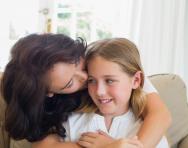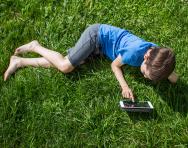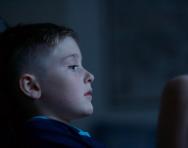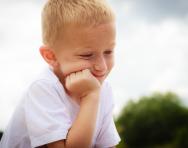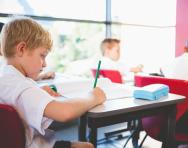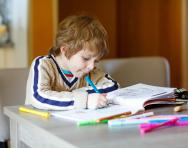Mindfulness in primary schools explained
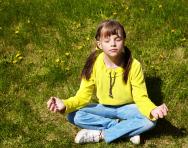
Everyday life can be hectic for today’s children. They’re under more pressure than ever at school, and many also have a busy extracurricular schedule of sports, music lessons, clubs and playdates. And while some thrive on busyness, others find it harder to handle: a recent study found that children as young as six are suffering from stress.


Boost Your Child's English & Maths!
- Weekly programme for each school year
- Worksheets sent direct to your inbox
- Keeps your child's learning on track
As an antidote to this non-stop, high pressure lifestyle, many schools are now teaching mindfulness. This scientifically proven form of meditation has become hugely popular amongst adults in recent years, and evidence suggests that it can also have numerous benefits for children.
What is mindfulness?
At its most basic level, mindfulness equips you with the skill of training the attention by attending to and focusing on whatever is happening in any given moment. Jon Kabat-Zinn, the founding father of secular mindfulness, described this skill as ‘being alive and knowing it.’
But mindfulness is also useful in helping us to address the kinds of worries that we all experience. In the case of young people, it can help them learn how to work skilfully with the stresses and strains of childhood and adolescence without being swept away by them. These coping skills then remain with them into adulthood.
Although mindfulness has religious roots, it’s now practised in a secular way. In adults, it’s been proven to help with stress, anxiety, depression and a range of chronic physical conditions, and is recommended by the National Institute for Health and Care Excellence for use with recurring depression. Recognising that many of these benefits apply to children as well, the Mindfulness in Schools Project (MiSP) is encouraging schools to teach children the art of mindfulness.
How does mindfulness benefit children?
Although most of the studies into mindfulness are based on adults, early research suggests that children may benefit in similar ways. MiSP is currently involved in a large-scale research study exploring its effects, and early findings have shown that mindfulness helps them:
- Feel calmer and more fulfilled
- Get on better with others
- Concentrate better
- Manage their stress and anxiety
- Manage performance more effectively in areas such as sport, music and drama.
‘We know that mindfulness can have a significant effect on anxiety and stress and children’s ability to manage them,’ confirms Claire Kelly, director of training and content at the MiSP. ‘Initial research suggests that it also has a positive impact on academic skills and performance, as well as general wellbeing. Indeed, it is hard to imagine how the two might not be linked.’
Teachers working with children who have special educational needs (SEN) including autism spectrum disorders (ASD) and attention deficit disorders (ADD) have had great success in teaching mindfulness skills. ‘It seems to help these children manage their own behaviour by giving them a moment to pause and think before reacting to a situation,’ explains Claire.
Unsurprisingly, children who have mental health issues can benefit from learning mindfulness practices. But Claire emphasises that it doesn’t just help kids with emotional issues. ‘The courses we have developed are not intended as therapeutic interventions,’ she says. ‘Mindfulness can certainly help some children who suffer from stress and anxiety, but it’s not just for those who are having a difficult time: it’s for all children.’
How is mindfulness taught in primary schools?
MiSP’s Paws b programme is designed specifically for Key Stage 2 children aged seven to 11. It includes PowerPoint presentations, worksheets and discussion as well as mindfulness practice. There are also exercises to do at home.
Paws b is usually taught by teachers from the child’s school and who have been trained by the MiSP. To date, nearly 1,000 teachers have undertaken Paws b training, and a further 2,300 have trained in the .b curriculum (MiSP’s classroom-based course for 11 to18-year-olds).
Through the Paws b curriculum, children learn:
- The neuroscience of mindfulness and how it affects the brain
- How to ground themselves when their mind or body is overly busy or out of balance
- How to respond rather than react to difficult situations
- How their thinking processes impact on them emotionally and physically
- How mindfulness can support them in daily activities and relationships.
Mindfulness practice itself involves activities such as attention-training and meta-cognitive tasks that help children focus on the present moment and work skilfully with their thoughts and emotions. It doesn’t necessarily come easily; the mind often wanders at first. But with practice, children become more able to focus their attention. ‘We go into some depth about how the mind needs to be trained, a bit like a puppy,’ Claire says. ‘Our feedback shows that children love the neuroscience and finding out about how the brain works.’
How are schools putting mindfulness into practice?
Paws b can taught as part of the PSHE curriculum, although some schools are introducing it into other aspects of school life. It can be delivered as six hour-long sessions, or 12 half-hour lessons. ‘Initially, schools will do a session a week, but some then introduce mindfulness practice at other times of the day,’ Claire explains.
BBC Teach offers a collection of short films on mindset and mindfulness as part of its KS2 PSHE content, with information on five steps to wellbeing (connect with others, be active, give to others, take notice and keep learning) as well as an animation, The Brain Lab, which looks at what' s happening inside our brain when we feel 'big' emotions.
Some of the occasions when schools are using mindfulness include morning registration, to help children settle ahead of a day of learning, after lunch, to calm them down after playing outside, and as part of assembly. Some schools are even training Year 6 children to teach mindfulness skills to other younger children, and inviting parents in to learn how to put it into practice.
Four ways to practise mindfulness with your child
Whether or not your child is learning mindfulness at school, making time for mindfulness at home can have a noticeable impact on their wellbeing. These strategies will help your child put it into practice in their everyday life.
1. Go for a mindful walk. Have a stroll around your neighbourhood, the local park or the woods, making an effort to spot things you haven’t noticed before. During the walk, stop for a minute and concentrate only on the things you can hear: an easy exercise in mindfulness.
2. Make a mindfulness jar. Fill a jar almost to the brim with water, tip in some glitter, and fasten the lid firmly. Your child can then shake the jar and focus on what happens as the glitter swirls and then settles.
3. Help children learn to manage their emotions by using mindfulness techniques. Headspace has partnered with Sesame Street to produce animated short films called Monster Meditations, available for free on YouTube, featuring Cookie Monster, Elmo and Grover. The characters experience frustration, impatience, nervousness, disappointment and excitement and learn how breathing and sensory activities can help them with everyday feelings.
4. Blow bubbles. This is a great way to focus on breathing: a key part of mindfulness practice. Encourage your child to make the biggest bubble they can, and notice how they have to blow slowly and steadily to make it happen.
5. Use a mindfulness app. There are lots of good apps that help children master mindfulness, including Headspace for Kids, Smiling Mind and Sleep Meditations for Kids. ‘Apps are great for children to do in their free time, but don’t impose them on your child,’ Claire advises. ‘It’s best to explore mindfulness with them, and, of course, this means you’ll benefit too.’

Give your child a headstart
- FREE articles & expert information
- FREE resources & activities
- FREE homework help
